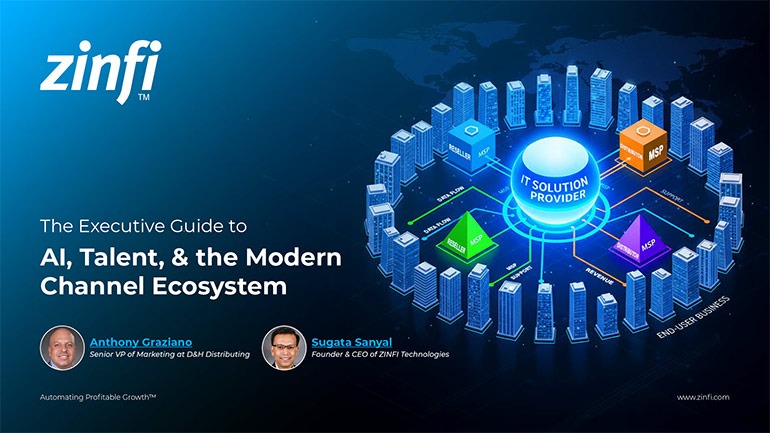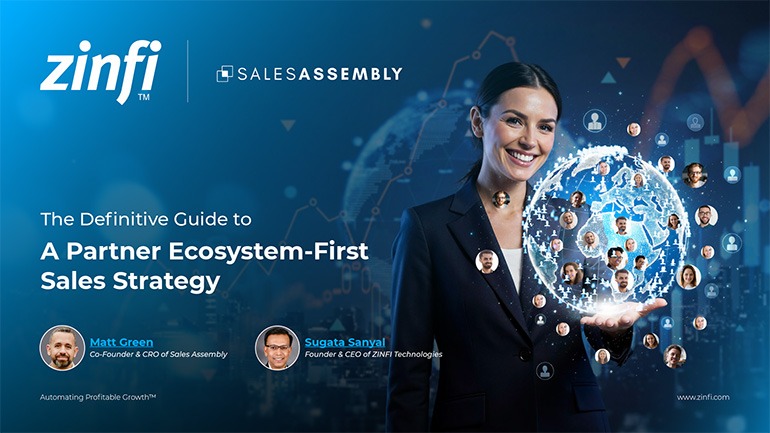Best Practices Articles

Pitfalls in Partner Relationship Management Software Integration
Integrating Partner Relationship Management (PRM) software into your technology ecosystem is critical in enhancing partner collaboration, streamlining workflows, and driving revenue growth. Integrating PRM software with platforms like CRMs (Salesforce, HubSpot) and ERPs (SAP, Oracle) can be challenging. Many organizations fall prey to common pitfalls that result in wasted resources, technical failures, and poor user adoption.
This guide explores these pitfalls, offers strategies to avoid them, and shares real-world examples of successful integrations. Whether planning or improving a PRM system, these insights will help you maximize your investment and ensure smooth integration.
What Is Partner Relationship Management (PRM)?
Before diving into the pitfalls, let’s define partner relationship management. Partner Relationship Management includes tools and processes to manage relationships with channel partners like distributors, resellers, affiliates, and consultants.
Key Features of PRM Software
- Partner Onboarding: Streamlines the process of bringing new partners into your program.
- Lead Distribution: Automates the allocation of leads and opportunities to partners.
- Partner Portal: Provides partners with a centralized platform to access resources, submit leads, and track performance.
- Performance Tracking: Monitors partner activities and measures KPIs to identify top performers.
- Training and Certification: Offers tools to train partners on your products and processes.
When integrated with CRMs or ERPs, PRM software creates a unified system that boosts efficiency, collaboration, and partner performance.
Why Partner Relationship Management Integration Matters
Successful partner relationship management integration brings significant benefits to organizations:
- Centralized Partner Data: Integration makes all partner data—leads, deals, and performance metrics — easily accessible in one platform.
- Improved Collaboration: Sales, marketing, and channel teams can collaborate more effectively using unified data.
- Faster Partner Onboarding: Automating processes reduces the time required to onboard new partners.
- Enhanced Reporting: Integration enables accurate reporting and analytics, helping organizations identify trends and optimize strategies.
- Revenue Growth: Businesses can accelerate revenue generation through partner channels by automating workflows and improving visibility.
Pitfall 1: Inadequate Planning and Scope Definition
The Challenge
Many organizations rush into integrating partner management software without adequately planning the project’s scope and requirements. Rushing into integration leads to chaotic processes, missed milestones, and failure to achieve desired outcomes.
Common Symptoms of Poor Planning
- Undefined project goals and objectives
- Misalignment between stakeholders (IT, sales, marketing)
- Overlooking technical challenges and resource needs
- Scope creep—adding new requirements without proper planning
Solution: Thorough Project Planning
Proper planning ensures alignment, reduces risks, and provides a roadmap for successful integration. Follow these steps:
- Define Objectives: Clearly articulate the goals of the integration, such as reducing partner onboarding time or improving reporting accuracy.
- Identify Systems and Tools: Determine which systems (e.g., HubSpot, Salesforce) will integrate with your partner relationship management software.
- Set Timelines and Milestones: Break the project into phases with measurable milestones and deadlines.
- Allocate Resources: Identify the necessary tools, personnel, and budget to support the integration process.
- Engage Stakeholders: Collaborate with IT, sales, marketing, and other key teams to gather input and align on goals.
Example: A technology firm integrated its partner relationship management system with Salesforce after six months of planning with workshops and assessments. The integration finished on time and greatly improved partner lead tracking.
Pitfall 2: Poor Data Quality and Consistency
The Challenge
Poor-quality data is a significant barrier to successful partner relationship management integration. Inconsistent, incomplete, or outdated data leads to errors in reporting, duplicate records, and inefficient workflows.
Why Data Quality Matters
- Accurate partner performance metrics depend on clean, reliable data.
- Duplicate or inconsistent data creates confusion and delays.
- Poor data alignment between PRM and CRM systems hinders visibility into partner activities.
Solution: Data Governance and Pre-Integration Audits
- Audit Existing Data: Conduct a thorough data audit to identify errors, redundancies, and distortions.
- Standardize Data Formats: Align data fields, naming conventions, and formats across all integrated systems.
- Map Data Fields: Use tools to ensure smooth data transfer between PRM software and CRMs like HubSpot or Microsoft Dynamics.
- Implement Data Governance Policies: Define data entry, maintenance, and validation rules to keep data clean over time.
- Monitor Data Quality Post-Integration: Regularly audit and clean data for long-term accuracy.
Example: A global manufacturing company fixed 80% of its data issues with a pre-integration audit before connecting PRM software to HubSpot CRM. Standardizing partner records and removing duplicates improved reporting accuracy and streamlined workflows.

Pitfall 3: Underestimating System Interoperability
The Challenge
Integrating PRM software with other systems—like CRMs, ERPs, and marketing tools—requires seamless communication and data exchange. Many organizations underestimate the technical challenges, leading to delayed projects and system incompatibilities.
Common Integration Issues
- Inconsistent APIs and data structures
- Complex workflows requiring custom configurations
- Lack of middleware to bridge gaps between systems
Solution: Prioritize Technical Compatibility
- Assess APIs and Integration Points: Evaluate all systems' APIs and data exchange protocols to identify compatibility issues.
- Use Middleware Solutions: Middleware tools like Mulesoft, Zapier, or Dell Boomi simplify data exchange and manage API complexities.
- Leverage Pre-Built Connectors: Many partner relationship management platforms offer pre-built connectors for popular CRMs (e.g., Salesforce, HubSpot) and ERPs.
- Perform Incremental Testing: Conduct testing at every integration stage to resolve technical issues early.
Example: A SaaS company used middleware to integrate its PRM platform with Microsoft Dynamics and Oracle ERP. The middleware handled complex data transformations, enabling seamless communication between systems and reducing development time by 30%.
Pitfall 4: Failing to Secure Stakeholder Buy-In
The Challenge
Stakeholder resistance is one of the most overlooked pitfalls in PRM integration. Without buy-in from sales, marketing, IT, and channel teams, the integration risks poor adoption and under-utilization.
Why Stakeholder Buy-In Matters
- Stakeholders ensure alignment between business needs and technical requirements.
- Engagement increases user adoption of the integrated PRM system.
- Collaboration resolves concerns early and builds trust in the process.
Solution: Engage and Educate Stakeholders
- Communicate Benefits Clearly: Show how PRM integration improves partner collaboration, reduces manual work, and drives revenue.
- Involve Stakeholders Early: Engage sales, marketing, and IT teams in planning to address concerns and gather input.
- Conduct Workshops: Host workshops to demonstrate PRM capabilities and highlight user benefits.
- Provide Role-Based Training: Tailor training sessions to help different teams adapt to the new system.
- Share Success Stories: Use case studies to illustrate the benefits of successful partner relationship management integrations.
Example: A financial services firm gained stakeholder support through workshops and success metrics from a similar partner relationship management integration. After seeing how it automated lead tracking and improved partner communication, sales teams embraced the new system.
Pitfall 5: Neglecting Post-Integration Support and Maintenance
The Challenge
Many organizations focus solely on implementation but fail to plan for post-integration support. Without ongoing maintenance, systems become outdated, data errors arise, and user adoption declines.
Why Post-Integration Support is Critical
- Regular monitoring ensures system performance remains optimal.
- CRM and PRM updates can disrupt integrations if not appropriately managed.
- Continuous training keeps users engaged and aligned with system capabilities.
Solution: Plan for Ongoing Maintenance
- Establish a Support Framework: Assign IT resources to monitor and resolve issues post-integration.
- Schedule Regular Audits: Conduct system performance audits to identify errors or areas for improvement.
- Update Systems Regularly: Ensure PRM software stays compatible with updates in integrated platforms like HubSpot or SAP.
- Gather User Feedback: Collect feedback from stakeholders to improve workflows and address concerns.
- Provide Continuous Training: Offer refresher training sessions to maximize system utilization.
Example: A healthcare company avoided post-integration issues by scheduling quarterly audits and providing ongoing support. This proactive approach improved system uptime, reduced errors, and maintained high user adoption rates.
Measuring the ROI of Partner Relationship Management Integration
To determine the success of your PRM software integration, track the following key metrics:
- Partner Onboarding Time: Measure how quickly the integrated system can onboard partners.
- Lead Conversion Rates: Track improvements in lead distribution and opportunity conversion.
- Partner Engagement: Monitor portal logins, deal submissions, and training participation rates.
- Revenue Growth: Evaluate the impact of partner sales on overall revenue.
- Cost Savings: Measure time and resource savings due to automation and streamlined processes.
By analyzing these metrics, organizations can assess the ROI of their PRM software and identify areas for continuous improvement.
Conclusion
Integrating partner relationship management software requires strategic planning, collaboration, and ongoing support. By avoiding common pitfalls like poor planning, bad data, and system issues, you can streamline workflows, boost partner performance, and drive business growth.
Remember, PRM integration is an ongoing process. Continuous monitoring, regular updates, and stakeholder engagement are critical to success. With a proactive approach, organizations can maximize their PRM software and create stronger, more productive partner networks.
Download the "Mastering PRM Integration" guidebook.
Best Practices Guidebook
 Modernizing Channel Marketing: AI and Ecosystem Enablement Best Practices
Modernizing Channel Marketing: AI and Ecosystem Enablement Best PracticesDownload for FREE
 The Channel’s Shift to Partner-Led With AI Best Practices
The Channel’s Shift to Partner-Led With AI Best PracticesDownload for FREE
 Hyperscalers, ISVs, and AI: Shaping the Future of B2B Software Distribution
Hyperscalers, ISVs, and AI: Shaping the Future of B2B Software DistributionDownload for FREE
 Definitive Guide to a Partner Ecosystem-First Sales Strategy
Definitive Guide to a Partner Ecosystem-First Sales StrategyDownload for FREE
 The Partner-Led Digital and AI Transformation Best Practices
The Partner-Led Digital and AI Transformation Best PracticesDownload for FREE
 Startup Talent Recruitment: Hiring Missionaries, Not Mercenaries
Startup Talent Recruitment: Hiring Missionaries, Not MercenariesDownload for FREE
 The Future of Partner Relationship Management with AI in Partnerships
The Future of Partner Relationship Management with AI in PartnershipsDownload for FREE
 Cybersecurity for the 99%: Strategies from the Frontline
Cybersecurity for the 99%: Strategies from the FrontlineDownload for FREE
 Mastering Partner Relationships: A Strategic Approach to Business Growth
Mastering Partner Relationships: A Strategic Approach to Business GrowthDownload for FREE
 Mastering Partner Relationship Management: Keys to SaaS Channel Success
Mastering Partner Relationship Management: Keys to SaaS Channel SuccessDownload for FREE
 Navigating the AI Revolution: Guide for Partners in the Microsoft Ecosystem
Navigating the AI Revolution: Guide for Partners in the Microsoft EcosystemDownload for FREE
 Mastering the Modern Buyers Journey: Sales Leader’s Guide to AI & Engagement
Mastering the Modern Buyers Journey: Sales Leader’s Guide to AI & EngagementDownload for FREE










